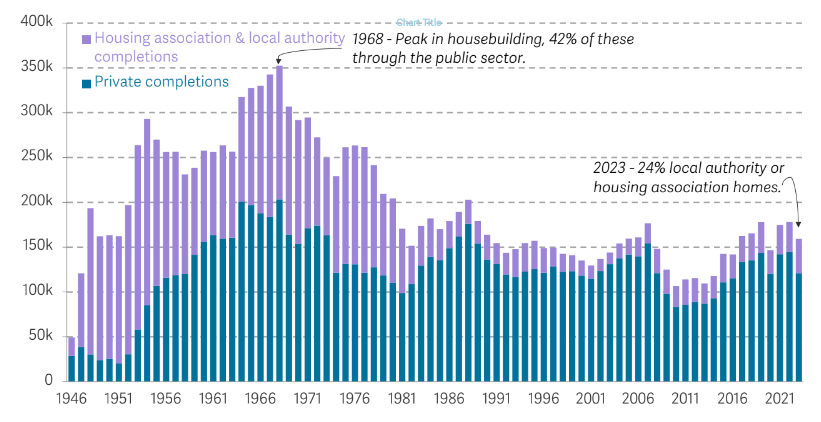Labour’s housebuilding plans ‘too reliant’ on private sector

An influential think tank has argued that the government is unlikely to meet its ambitious housebuilding targets because it is “too reliant” on the private sector.
The government has set itself a target of building 1.5m new homes over the course of the parliament, which would require annual housebuilding levels to rise to around 300,000, levels last seen in the 1960s.
The latest available figures show that only 234,000 new dwellings were completed in the 2023 financial year, which was little changed on 2022.
To help meet its targets, the government has announced a set of major reforms to the planning system, including re-introducing mandatory housing targets and introducing a new category of ‘grey belt’ land.
‘Grey belt’ land includes previously developed land in the green belt, such as car parks, disused buildings and scrubland.
These are “welcome steps,” the think tank said, noting that the ‘grey belt’ reforms alongside prioritising brownfield sites could provide enough land to build over 1m new homes.
However, the Resolution Foundation warned that the government was unlikely to meet its targets unless it was willing to provide direct investment into building affordable homes.
“History suggests that the state also needs to play a role,” it said. “In the post-war housebuilding peak of 1968, two in five homes were built through the public sector.”

The Resolution Foundation noted that obligations on affordable housing are often “watered down” to ensure that developments get built, making state support particularly important for providing affordable homes.
“If the Government wants to build the 1.5m more homes that Britain needs, there’s no alternative to direct intervention via greater public investment in affordable housing,” Camron Aref-Adib, researcher at the Resolution Foundation, said.
“That’s the only way Britain has built at scale in the past, and it’s crucial to delivering in the future too,” Aref-Adib said.